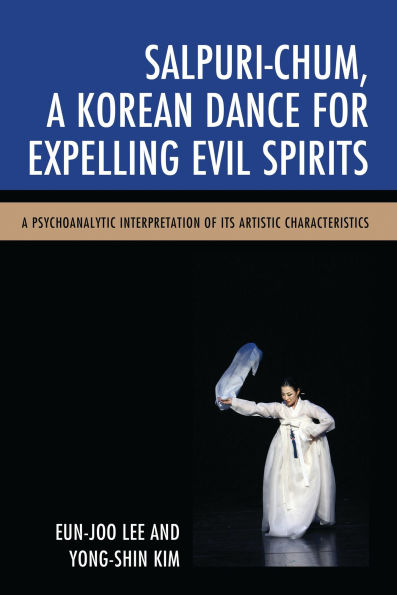This book is a study of Salpuri-Chum, a traditional Korean dance for expelling evil spirits. The authors explore the origins and practice of Salpuri-Chum. The ancient Korean people viewed their misfortunes as coming from evil spirits; therefore, they wanted to expel the evil spirits to recover their happiness. The music for Salpuri-Chum is called Sinawi rhythm. It has no sheet music and lacks the concept of metronomic technique. In this rhythm, the dancer becomes a conductor.
Salpuri-Chum is an artistic performance that resolves the people’s sorrow. In many cases, it is a form of sublimation. It is also an effort to transform the pain of reality into beauty, based on the Korean people’s characteristic merriment. It presents itself, then, as a form of immanence. Moreover, Salpuri-Chum is unique in its use of a piece of white fabric. The fabric, as a symbol of the Korean people’s ego ideal, signifies Salpuri-Chum’s focus as a dance for resolving their misfortunes.
1125600285
Salpuri-Chum is an artistic performance that resolves the people’s sorrow. In many cases, it is a form of sublimation. It is also an effort to transform the pain of reality into beauty, based on the Korean people’s characteristic merriment. It presents itself, then, as a form of immanence. Moreover, Salpuri-Chum is unique in its use of a piece of white fabric. The fabric, as a symbol of the Korean people’s ego ideal, signifies Salpuri-Chum’s focus as a dance for resolving their misfortunes.
Salpuri-Chum, A Korean Dance for Expelling Evil Spirits: A Psychoanalytic Interpretation of its Artistic Characteristics
This book is a study of Salpuri-Chum, a traditional Korean dance for expelling evil spirits. The authors explore the origins and practice of Salpuri-Chum. The ancient Korean people viewed their misfortunes as coming from evil spirits; therefore, they wanted to expel the evil spirits to recover their happiness. The music for Salpuri-Chum is called Sinawi rhythm. It has no sheet music and lacks the concept of metronomic technique. In this rhythm, the dancer becomes a conductor.
Salpuri-Chum is an artistic performance that resolves the people’s sorrow. In many cases, it is a form of sublimation. It is also an effort to transform the pain of reality into beauty, based on the Korean people’s characteristic merriment. It presents itself, then, as a form of immanence. Moreover, Salpuri-Chum is unique in its use of a piece of white fabric. The fabric, as a symbol of the Korean people’s ego ideal, signifies Salpuri-Chum’s focus as a dance for resolving their misfortunes.
Salpuri-Chum is an artistic performance that resolves the people’s sorrow. In many cases, it is a form of sublimation. It is also an effort to transform the pain of reality into beauty, based on the Korean people’s characteristic merriment. It presents itself, then, as a form of immanence. Moreover, Salpuri-Chum is unique in its use of a piece of white fabric. The fabric, as a symbol of the Korean people’s ego ideal, signifies Salpuri-Chum’s focus as a dance for resolving their misfortunes.
31.49
In Stock
5
1

Salpuri-Chum, A Korean Dance for Expelling Evil Spirits: A Psychoanalytic Interpretation of its Artistic Characteristics
128
Salpuri-Chum, A Korean Dance for Expelling Evil Spirits: A Psychoanalytic Interpretation of its Artistic Characteristics
128Related collections and offers
31.49
In Stock

Product Details
| ISBN-13: | 9780761868880 |
|---|---|
| Publisher: | Bloomsbury Publishing |
| Publication date: | 03/07/2017 |
| Sold by: | Barnes & Noble |
| Format: | eBook |
| Pages: | 128 |
| File size: | 4 MB |
About the Author
From the B&N Reads Blog
